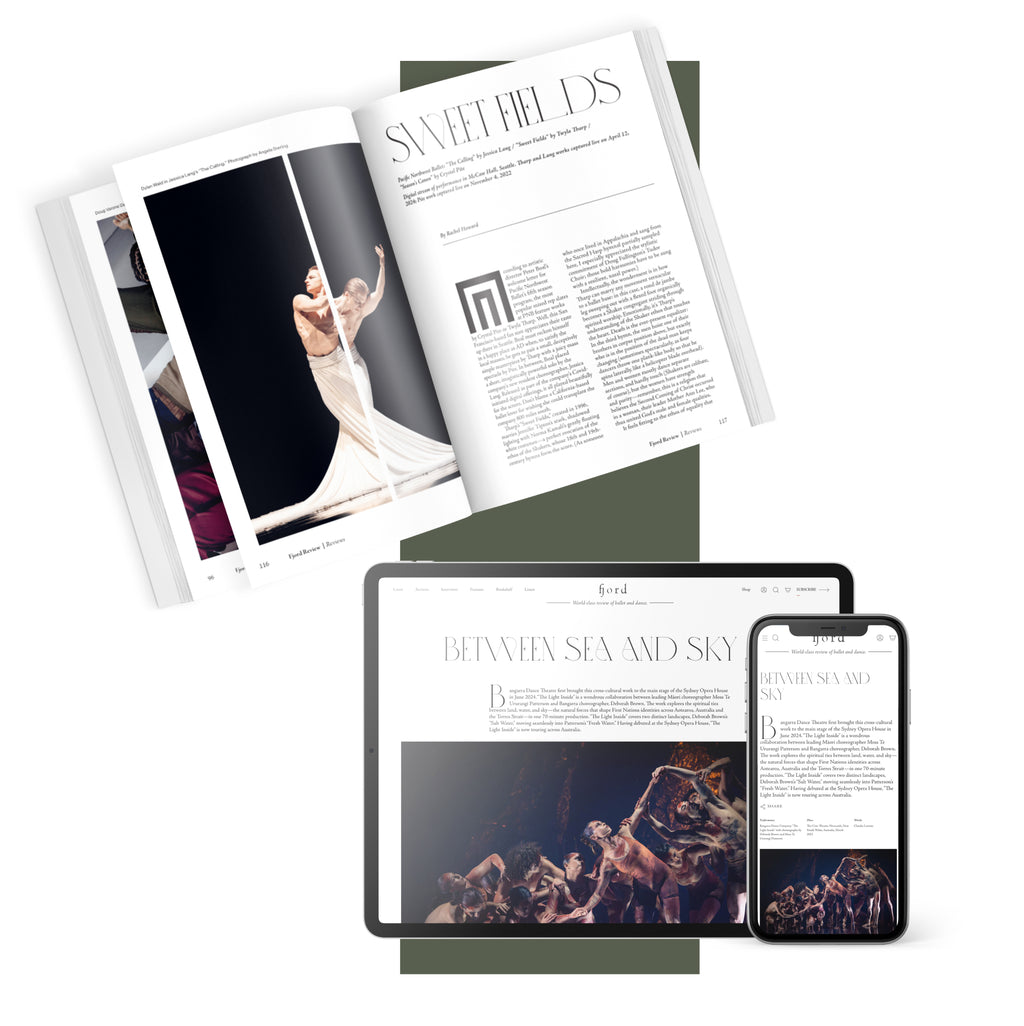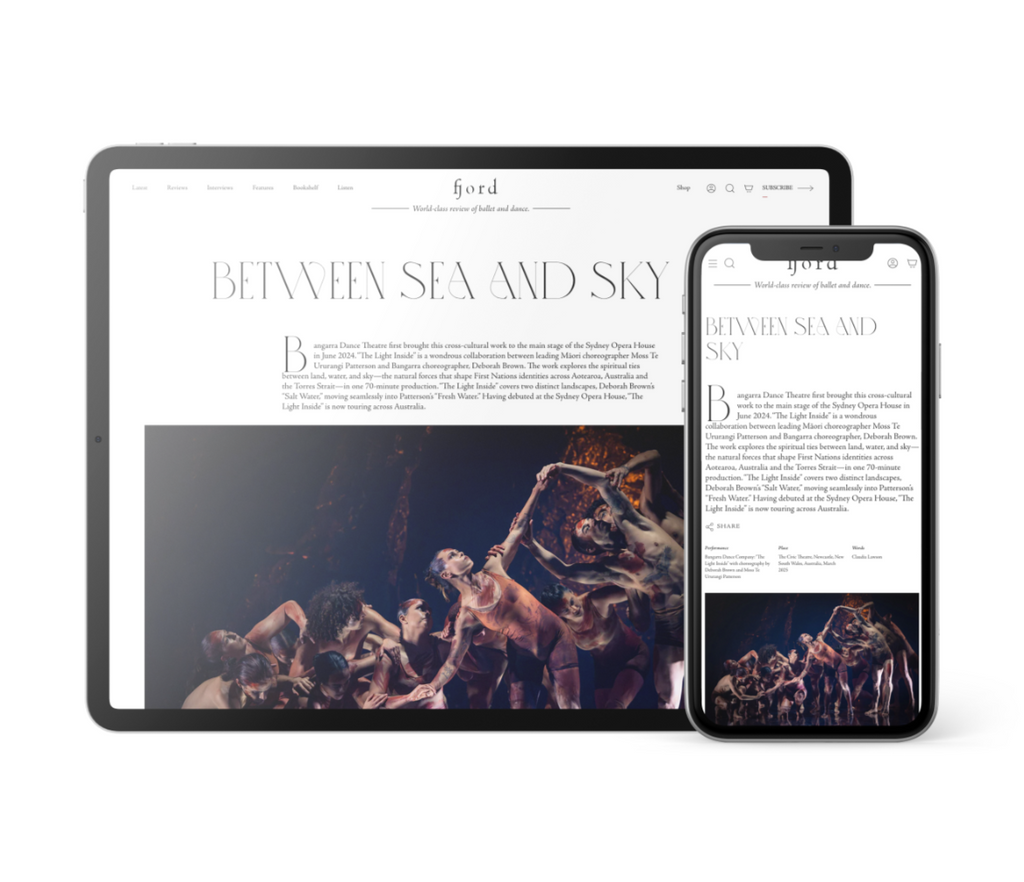Float like a Butterfly
Sans tutu or pointe shoes, New York Ballet principal Sara Mearns delivered a knock-out punch in her 20-minute solo, “Zebra.”
Continue Reading
World-class review of ballet and dance.
Shadows, dark matter and the enigmas of consciousness—the ideas behind Crystal Pite’s “Frontier” are timely and timeless at once. A contemporary lens on the ballet, created on Nederlands Dans Theater in 2008 and newly reworked for Vancouver-based Ballet BC, magnifies a motif of borders, both physical and political, two defining contours of twenty-first century terrain. At the same time, there’s an ephemerality to it all, an ineffable ‘is and always was-ness’ that knows no bounds, tangible, temporal or otherwise. Together these angles make a thought-provoking piece, with deeply felt dancing that grounds and humanises the cosmic abstractions at play.
Performance
Place
Words



“Uncommonly intelligent, substantial coverage.”
Your weekly source for world-class dance reviews, interviews, articles, and more.
Already a paid subscriber? Login

Sans tutu or pointe shoes, New York Ballet principal Sara Mearns delivered a knock-out punch in her 20-minute solo, “Zebra.”
Continue ReadingJapan Society’s Yukio Mishima centennial series culminated with “Mishima’s Muse – Noh Theater,” which was actually three programs of traditional noh works that Japanese author Yukio Mishima adapted into modern plays.
Continue ReadingThroughout the year, our critics attend hundreds of dance performances, whether onsite, outdoors, or on the proscenium stage, around the world.
Continue ReadingOn December 11th, the Alvin Ailey American Dance Theater presented two premieres and two dances that had premiered just a week prior.
Continue Reading
comments